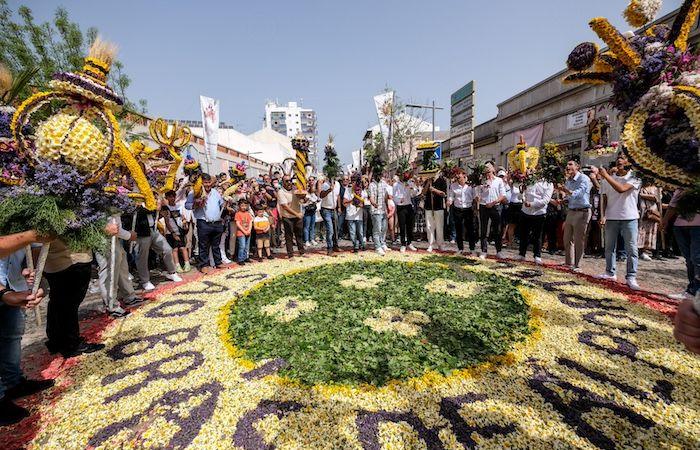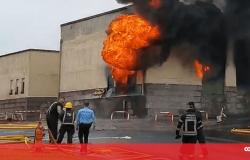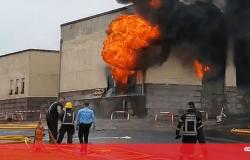The traditional Festival of the Flowered Torches took place again in São Brás de Alportel on Easter Sunday, March 31st, a popular manifestation of faith in the resurrected Jesus Christ, weather permitting naturally. This festival, and specifically the Resurrection Procession, better known as the Alleluia Procession, participated by thousands of people, including emigrants and many tourists (Portuguese from various parts of the country and foreigners), is establishing itself in the Algarve as the second largest participation, right after that of Nossa Senhora da Piedade (“Sovereign Mother”), even surpassing the Procession of the Burial of the Lord in Faro, held on the night of Good Friday. The kilometer-long flower carpet, which praises the resurrection of Christ, can be seen from 9.30am on the streets of São Brás de Alportel.
At the same time, Largo de São Sebastião hosts the Easter Flavors Meeting while the Craft Exhibition takes place in the churchyard of the main church. The streets, also decorated with red and white flags, quilts hanging from the windows and tarpaulins with the image of the resurrected Christ, are transformed into a “sea” of flowery torches with men leading the procession, forming wings and holding a torch in their hands. . Throughout the procession, they gather in small groups to alternately raise the cry of “hallelujah”. Here and there a powerful and sonorous voice is heard: “He is risen as he said!”. The group, raising the torch high, responds: “Hallelujah, hallelujah, hallelujah!” The historian and former parish vicar of São Brás de Alportel, Father Afonso Cunha Duarte, explains that “this procession was once popular throughout the Algarve”, currently also taking place in Portimão. In the 19th century “practically every village organized this Resurrection Procession”, in which people carried in their hands a candle that in the past “was called a torch”, says the priest.
Also known as the Procession of the three Marys (in reference to the women who went to Jesus’ tomb on the morning of the resurrection), the confraternities, responsible for the organization, were then obliged to carry a lit torch or lamp and the opas dressed. Later, the lack of wax led to the appearance of painted sticks decorated with flowers, on top of which a small candle was placed. Later, with the disappearance of the brotherhoods, the decorated sticks, lanterns and candles lit next to the canopy and the opas remained in the procession, which are still used today by the men carrying the canopy. “Throughout the procession, hymns, responses and alleluia were sung, in honor of the Resurrection of the Lord.
In the past, there were also one or two choirs singing and the people responded, but over time, the lack of clergy and singers meant that the song remained on the lips of the people. With the implementation of the Republic this situation, which was common in all parishes, changed, as public demonstrations were prohibited. The tradition of processions has faded”, says Father Cunha Duarte who, by way of example, recalls that, in Lagos, the first procession only returned in 1941. With the departure of the former parish priest, Father José Cunha Duarte, (brother of Father Afonso Cunha Duarte) to the parish of São Brás de Alportel in 1981, the party was recovered and never ceased. The Festa das Torchas Floridas, organized in partnership by the parish of São Brás de Alportel, the Associação Cultural Sambrasense and the Municipal Council of São Brás de Alportel, with the support of Grouping 1330 of the National Listening Corps, parish, local associations and the community, once again guarantees accessibility for people with reduced mobility.






